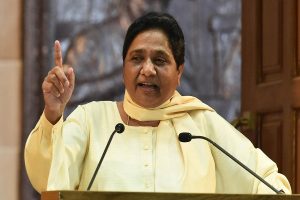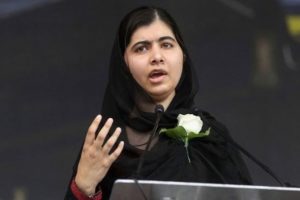While taking advantage of its majority in both Houses of Parliament, the ruling BJP is planning to revisit the existing scheme of OBC reservation through multiple measures.
First, the Other Backward Classes Bill will be reintroduced to give constitutional status to the National Commission for Backward Classes (NCBC) under Article 340 in the forthcoming winter session.
Advertisement
Second, the government plans to examine the “extent of inequitable distribution of benefits of reservation among castes and communities included in the broad category of OBCs” in the Central List.
Third, the government is emphasising on subcategorisation within OBCs for a “more equitable distribution of reservation benefits among OBCs”, as claimed. Fourth, the government has enhanced the creamy layer ceiling from Rs.6 lakh to Rs.8 lakh.
Finally, the Union cabinet has resolved to identify posts in Public Sector Undertakings and Financial Institutions that will be marked in creamy layer category to exclude them from 27 per cent OBC reservation. In all probability, these measures are not taking place in isolation but have a political purpose.
First, the party aims to change the electoral dynamics of lower castes in its favour by manipulating its policy orientation. Second, the proposed measures are adopted to gradually overhaul the reservation system.
Prudently or helplessly, the opposition parties are not able to voice substantive questions on these measures due to decline in their concern for the idea of social justice. Be that as it may, in a multiple undulating society like ours, accomplishing the objective of social justice as enshrined in the Constitution is a difficult political task.
The Constitution makes the State the trustee to preserve, protect, defend and uplift the backward classes within the confines of the Constitution. Government considering the recommendations of Mandal Commission apropos the benefits to be extended to the socially and educationally backward classes as discoursed, acknowledged that at the outset certain weightage must be given to such classes (castes) in the services of the Union and their Public Undertakings.
The state act was confronted before the nine-judge bench in the Indra Sawhney Case. Several shades of opinion were presented in the Court ranging from one extreme to the other. The apex court with some significant restrictions upheld the 27 per cent reservation to backward class. One such restriction was the elimination of creamy layer from the Backward Class. The object was to ensure that benefit of reservation must reach to lower strata or needy people. The increased creamy layer ceiling from Rs.6 to 8 lakh is against this spirit.
Instead of creating a bigger pool of eligible people for government jobs and seats in educational institutions, as claimed, it would help only the cream. The rising gap between poor and middle class OBCs will further deepen and the benefit will continue to be appropriated by the latter class. It appears that the change in the ceiling is aimed to carve an electoral constituency among the emerging and aspirant Middle Class of OBCs.
The very concept of a class denotes a number of persons having certain common traits which distinguish them from the others. In a backward class under Article 16(4) or 15(4), if the connecting link is the social backwardness, it should broadly be the same in a given class. If some of the members are far too advanced socially, which in the context necessarily means economically and educationally, the connecting thread between them and the remaining class shatters.
They would be misfits in the class. After excluding them alone would the class be a compact class. In fact, such exclusion benefits the truly backward. Difficulty however arises on how and where to draw the line? For, while drawing the line, it should be ensured that it does not result in taking away with one hand what is given by the other.
The basis of exclusion should not merely be economic, unless, of course, the economic advancement is so high that it necessarily means social advancement. Of course, there is a strong need to audit the present system of reservation on the line of why it did not work meaningfully to address the concerns of social justice.
We also need to assess the aggregate outcome in terms of socio-educational progression of the OBCs and accordingly devise more strong measures like their sub-categorisation to overcome the gaps. But before doing all these, the government should first release the Economic Caste Census 2011 for a judicious preparation to address the OBC questions.
Second, a provision of reservation for OBC Women should also be thought of to ensure gender justice. Let the incentive of reservation percolate down to that group/family among OBCs who could not get benefit of reservation for any reason.
Similarly, we also need to revisit the religious sanctity of SC and ST categories and incorporate the similarly placed caste groups present in Christian and Muslim communities in these categories so as to equalise the benefit of aggregate outcomes of reservation.
To sum up, in the absence of a correct and comprehensive policy, the political executive, owing to the deterioration of the electoral process will continue to create layers of backward castes, religions and racial groups where even 90 per cent quota will not be adequate. The ruling BJP should not turn the issue of OBC reservation into a problem while wanting to create a ‘Neo Mandal’ mobilisation to its favour.
It should rather come forward with a policy plan with strong conviction of reducing the marginality of socially oppressed groups, be it public or private.
(The writers are, respectively, Deputy Registrar, Supreme Court of India and Associate Professor and Head, Political Science Department, Maulana Azad National Urdu University, Hyderabad.)











